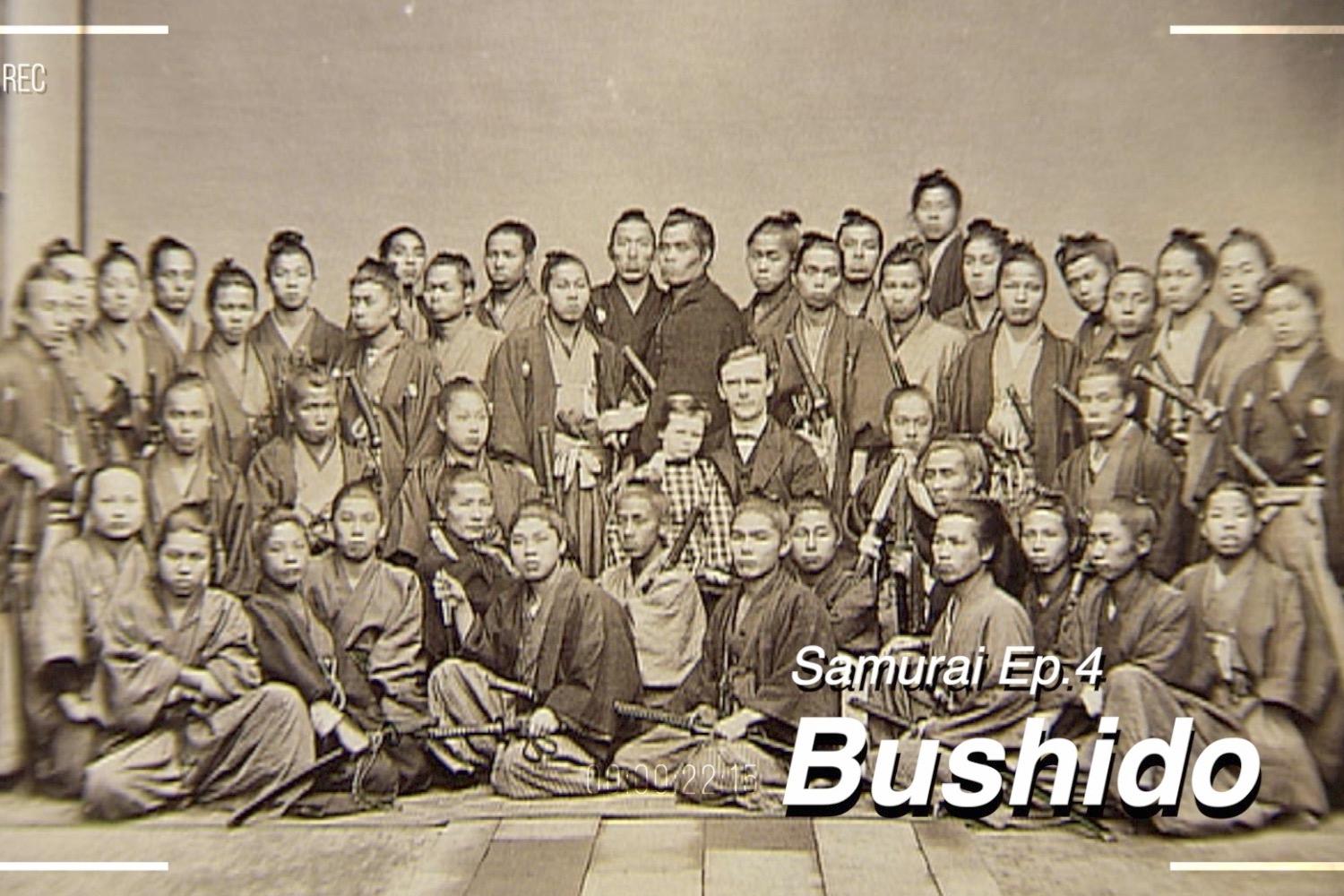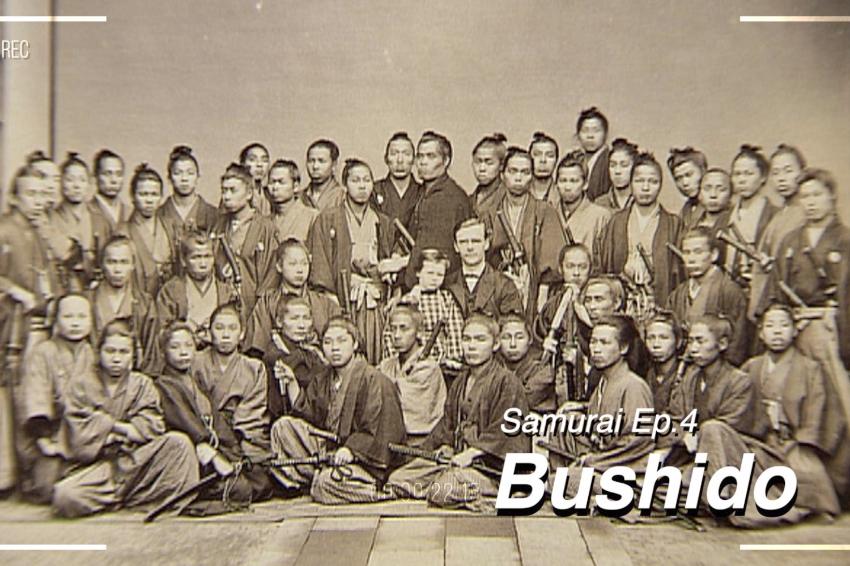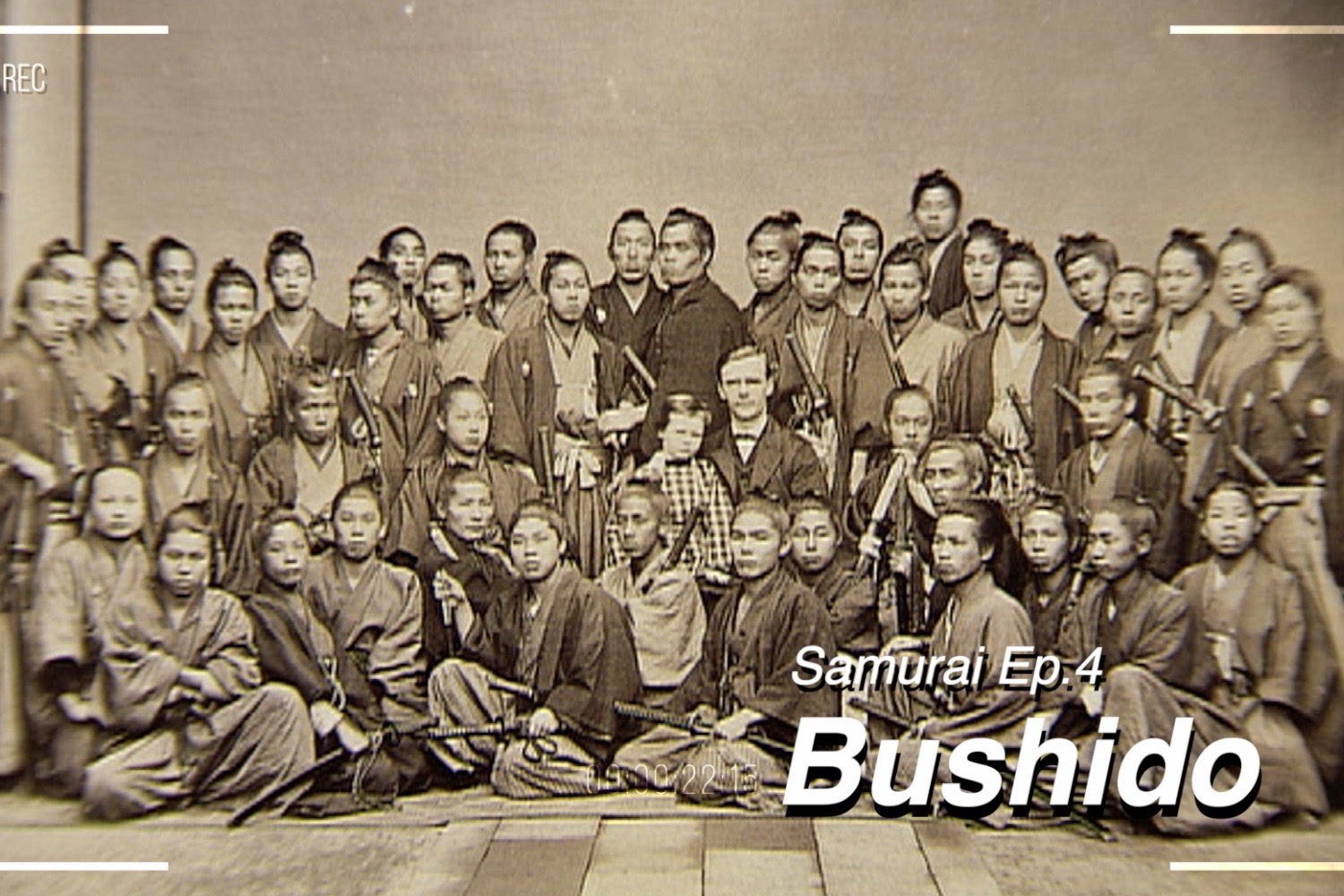2003년 다큐멘터리
생활 속의 무술
무사(武士)
4화 [무사도(武士道), 무술의 문명화 - 기술적 정신적 변화]
- 갑주(니혼캇츄: 日本甲冑). 전국시대(戦国時代)
전국시대까지만 해도 칼은 무사(武士)들에게 그리 유용한 무기는 아니었다.
갑주를 입은 무사(武士)들은 몸놀림에 제약을 받을 수밖에 없었다.
따라서 한방에 상대를 제압할 수 있는 무기들이 사용됐다.
- 하카마(일상복) 에도시대(江戸時代) 쇼군(将軍)
하지만 막부가 전국을 평정한 에도시대 이후 갑주는 더이상 필요가 없어졌다.
무사(武士)들은 일상복 하카마를 입었고, 무기도 휴대하기 편한 검으로 바꾸기 시작했다.
- 에도시대 무사(武士) 사진
무사(武士)들은 검술연마에 힘썼고 검술이 좋은 무사(武士)는 영주들에게 인기가 높았다.
에도시대 중기, 죽도와 방호구의 사용은 검술에 더욱 획기적인 변화를 가져왔다.
- 이리에 교수 인터뷰
(그로 인해 실제로 상대를 때리고 찌르는 연습이 행해지게 된 것입니다.
따라서 그 기술도 크게 18세기 초기에서 중기에 걸쳐 그 이전의 연습방식과 18세기 이후의 죽도 검술,
즉 ‘죽도 내려치기’로 연습방식이 크게 바뀌었는데 그 죽도 검술이 현대의 검도로 이어졌다고 말할 수 있습니다.)
- 죽도 검도 이미지 검도(剣道) Kendo
방호구와 죽도를 사용하면서 실제시합을 통해 자신의 검술 실력을 확인할 수 있게 된 것이다.
이런 과정을 거치면서 검술은 더욱 세밀해지고 빨라졌다.
- 무사(武士) 고택
하지만 무사(武士)들에게 더욱 본질적인 변화는 다른 곳에서 찾아온다.
바로 유교의 도입이었다.
- 무사(武士) 사진
도쿠가와 이에야스(徳川家康)는 무력으로 얻은 천하를 다스릴 수 있는 것은 무력이 아니라고 판단했다. 도쿠가와 이에야스(徳川家康)
- 무사(武士) 고택
또한 살벌한 전국시대적 습관을 가지고 있는 무사(武士)들을 순화시키는 것은 당시 필수 불가결한 과제였다.
무사(武士)들에게는 유교적 교육에 입각한 도덕교육이 이뤄졌다.
- 이리에 교수 인터뷰
(무술의 실리, 실천성의 성격이 엷어진 이후 무술의 기술 자체를 추구하는 즉 고도의 기술을 추구하는 것이죠.
그 안에 진정한 기술이란 무엇인가, 그리고 천지자연의 이치,
혹은 인간의 삶의 방식에까지 확대해 나가려는 예도성의 성격입니다.)
- 가토리 신토류 종가
당시 무사(武士)들에게 특히 강조된 것은 주군에 대한 충성이었다.
주군이 틀린 판단을 내려도 무사(武士)는 따를 수밖에 없었다.
전국시대의 무사(武士)들은 자신이 스스로 가치있다고 판단한 일에 충성을 다했다.
하지만 에도시대 직업무사(武士)들은 자신을 채용한 주군을 맹목적으로 섬겨야했다.
이런 폐단을 막기 위해 가토리 신토류에서는 대대로 장남에게 주군을 섬기지 못하게 했다.
- 오다케 키쿠덴, 가토리 신토류 사범 인터뷰
(만일 검으로 주군을 섬기게 되면 어느날 갑자기 주군이 불러 ‘내게 무례를 행하였다. 저자를 베어라’하고 사람의 목숨을 끊으라는 명령이 내려지게 된다는 겁니다.
일단 명령을 받으면 그 사람을 베지 않으면 안 되는데 만약 그 사람이 자기 친구였을 경우 친구를 벨수 없다고 하면 불충이 됩니다.
그렇다고 친구를 베면 신의를 잃게 되고)
- 가토리 신토류 무사(武士)들 사진
그후 신토류에서는 20대에 이르는 오늘까지 그 전통을 지키고 있다.
- 가토리 신토류 시범
하지만 주군에 대한 무사(武士)들의 맹목적인 충성은 에도시대 말기까지 이어졌다.
250년동안 전쟁이 없는 오랜 평화의 시기.
무술은 전장이 아닌 도장에서, 상대를 제압하는 것이 아닌 심신수련을 위한
방편으로 자리잡았다.
Japanese warrior: Samurai, Episode 4
[Japanese Bushido, Technical and Mental Change]
2003 Documentary, Martial Arts in Life
00:00:01 - Armor (Nihon Katchu)
00:00:02 Until the Sengoku period, swords were not very useful weapons for samurai.
00:00:08 The samurai in armor had no choice but to be restricted in their movements.
00:00:12 Therefore, weapons that can subdue the opponent in one shot were used.
00:00:16
00:00:27 - Hakama (everyday wear)
00:00:30 However, after the Edo period, when the Shogunate ruled the country, armor was no longer needed.
00:00:36 The samurai wore hakama in their daily clothes, and started changing their weapons to swords that were easy to carry.
00:00:43
00:00:48 The samurai worked hard to hone their swordsmanship, and the samurai with good swordsmanship was popular with the lords.
00:00:55 - A photo of a samurai in the Edo period
00:00:57 In the middle of the Edo period, the use of bamboo swords and protective gear brought more epoch-making changes to swordsmanship.
00:01:03
00:01:04
00:01:07 - Interview with Professor Irie
00:01:08 (As a result, the practice of hitting and stabbing the opponent was actually practiced.
00:01:21 Therefore, the technique was largely changed during the early to mid-18th century
00:01:28 between the practice method before that and the bamboo sword swordsmanship after the 18th century,
00:01:40 In other words, it is 'hitting with a bamboo sword'. This stroke greatly changed the practice method, leading to modern kendo.)
00:01:51
00:01:54 He was able to check his swordsmanship skills through actual matches while using protective gear and bamboo swords.
00:01:59 - Jukdo Kendo Training
00:02:04 Through this process, swordsmanship became more detailed and faster.
00:02:09
00:02:10 - The old house of samurai
00:02:15 however, a more fundamental change for samurai comes from other places.
00:02:20 It was the introduction of Confucianism.
00:02:26
00:02:27 -Photo of a samurai in the Edo period
00:02:28 Ieyasu Tokugawa judged that it was not force that could rule the world obtained by force.
00:02:36
00:02:39
00:02:41 Also, it was an indispensable task at the time to purify the warriors who had the bloody warring States' customs.
00:02:50 For the warriors, moral education based on Confucian education was provided.
00:02:55
00:02:56 - Interview with Prof. Irie
00:02:57 (After the practicality and practicality of martial arts has faded, it is pursuing the technique of martial arts itself, that is, pursuing advanced techniques.
00:03:08 What is true technology in it, and it is the character of Yedo
00:03:16 who seeks to expand to the principles of nature and the way of life of humans.)
00:03:22
00:03:24
00:03:28 What was especially emphasized to the samurai at that time was loyalty to their master.
00:03:32
00:03:33 Even if the master made a wrong decision, the warrior had no choice but to follow.
00:03:38 The samurai of the Warring States period were loyal to what they judged to be valuable.
00:03:44 However, in the Edo period, professional samurai had to serve their lords blindly.
00:03:50 To prevent such evil, Katori Shintoryu prohibited the eldest son from serving his master from generation to generation.
00:03:58
00:03:59
00:04:06 - Interview with Instructor Odake Kikuden and Katori Shintoryu
00:04:07 (If you serve your master with a sword, one day your master will suddenly call you and give you an order to kill someone,
00:04:18 saying, ‘You have been rude to me’ or ‘cut the author’.
00:04:21 Once you receive an order, you have to cut the person, and if that person was your friend,
00:04:34 it would be disloyal to say that you can't cut your friend.
00:04:35 However, if you cut your friend, you will lose your faith.)
00:04:46
00:04:47 Since then, Shinto-ryu has maintained that tradition to this day, reaching the 20s.
00:04:54
00:04:54 - Demonstration of Katori Shintoryu
00:04:58 However, the blind loyalty of the samurai to the master continued until the end of the Edo period.
00:05:05
00:05:06 A long period of peace without war for 250 years.
00:05:10 Martial arts have established themselves as a way to practice mind and body
00:05:13 rather than suppressing opponents in the dojo, not the battlefield.







